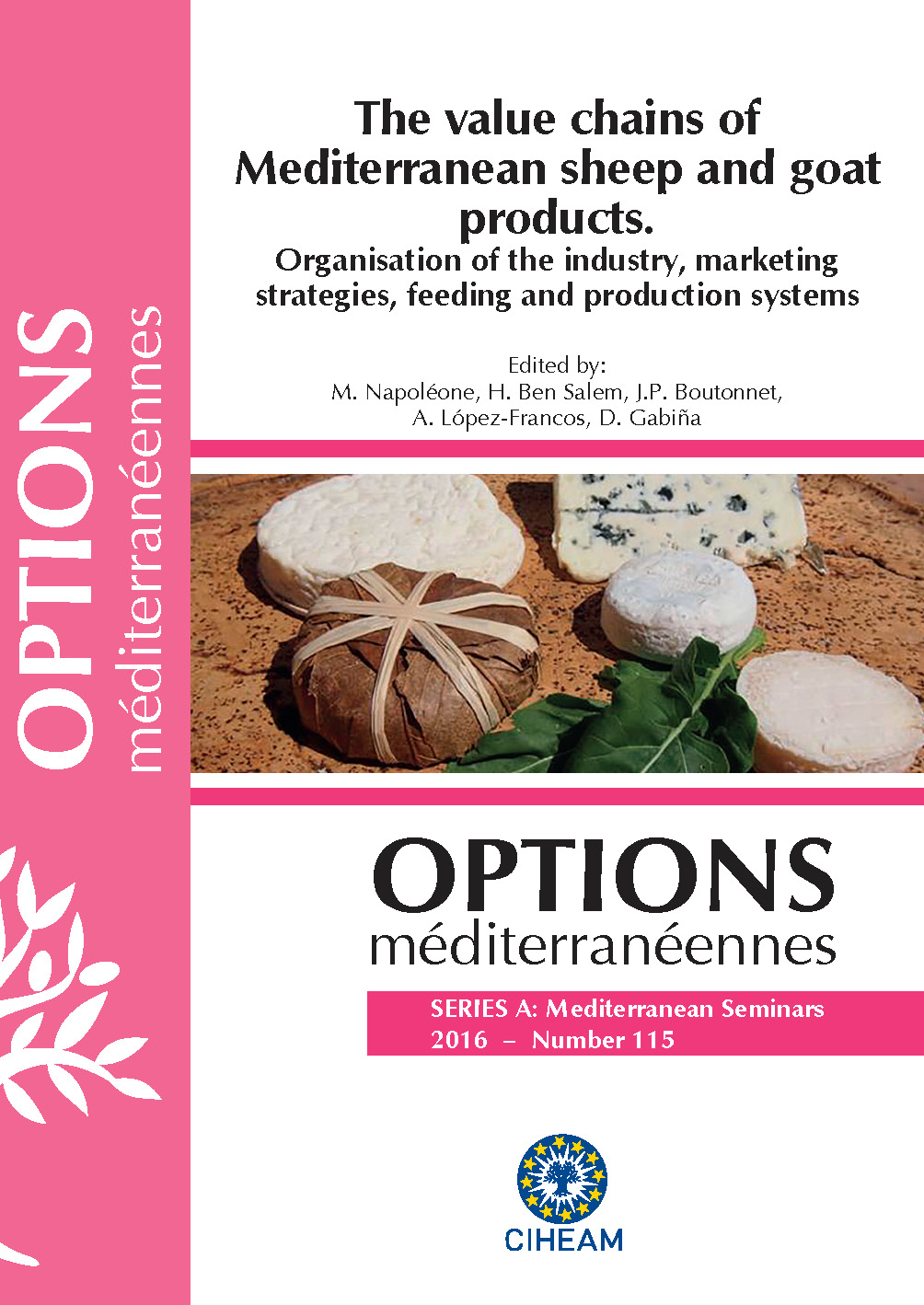| Article précédent | p. 237-240 | Article suivant |
The effect of including lupin and triticale in dairy goat diet on performance and fatty acid profile of milk
In Northern Morocco mountainous, goat feeding is based on forest rangelands and characterized by strong seasonal variability responsible of the low productivity of herds. Feed improvement is necessary. Lupin and triticale are both available resources in region. This work aims to study the effect of lupin and triticale utilization in dairy goat diet on production performance and fatty acid profile of milk. During 115 days, 21 goats were divided in three lots of 7 each (Control, R2 and R3). The food ration was based on rangeland and ad-libitum oat hay and supplemented by 3 concentrate diets with respectively 0, 25, 50% of lupin and 0, 50, 25% of triticale. Milk production was quantified every two weeks and milk samples were collected monthly to determine fatty acid profile using gas chromatograph (CG). The monthly daily milk production was not affected by the introduction of lupin and triticale in the diet (P>0.05). The production was statistically the same in every month. Comparing to control group, fatty acids in milk of test groups are not affected by the diet. But in comparing test groups (R2 and R3), C12 fatty acid differs significantly (P<0.05). Groups of desirable fatty acids, unsaturated, monounsaturated and polyunsaturated, omega 3 and 6 are statistically similar in control, R2 and R3 groups (P>0.05). In conclusion, lupin and triticale introduction can reach 50% without adversely affecting production performance and fatty acid profile of goat milk.
Dans les montagnes du Maroc du Nord, l’alimentation des caprins est basée essentiellement sur les parcours forestiers qui se caractérisent par une variabilité saisonnière. Ce qui explique la faible productivité de ce troupeau. L’amélioration du calendrier alimentaire s’avère nécessaire pour répondre aux besoins des animaux. Le lupin et le triticale sont deux ressources alimentaires disponibles dans la région. Durant 115 jours, 21 chèvres sont réparties en 3 lots (Témoin, R2, R3) de 7 chèvres. Leur ration de base est constituée du parcours et du foin d’avoine à volonté, supplémentée par 3 rations du concentré contenant respectivement 0, 25, 50% du lupin et 0, 50, 25% du triticale. La production laitière est quantifiée chaque 15 jours et des échantillons du lait sont prélevés mensuellement pour déterminer le profil des acides gras à l’aide du chromatographe à phase gazeuse (CG). D’après les résultats, la production laitière n’est pas affectée par l’introduction du lupin et du triticale dans la ration (P>0,05). Comparativement au lot témoin, le profil des acides gras des lots test n’est pas affecté par l’alimentation. Mais en comparant les deux lots test (R2 et R3), l’acide gras C12 diffère significativement (P<0,05). Les groupes des acides gras désirables, insaturés, monoinsaturés, et poly-insaturés, oméga 3 et 6 sont similaires chez les trois lots (P>0,05). En conclusion, le lupin et le triticale peuvent être introduits dans la ration de la chèvre laitière à un taux de 50% sans affecter les performances de la production et le profil des acides gras du lait.
- [ Afficher ]
- [ Télécharger ]
- [ Exporter la citation ]
Vous pouvez télécharger la citation au format :
- [ Imprimer ]
-
Mots-clés
LAIT, LUPINUS, PRODUCTIONCiter cet article
El Otmani S., Ayadi M., Chentouf M. The effect of including lupin and triticale in dairy goat diet on performance and fatty acid profile of milk. In : Napoléone M. (ed.), Ben Salem H. (ed.), Boutonnet J.P. (ed.), López-Francos A. (ed.), Gabiña D. (ed.). The value chains of Mediterranean sheep and goat products. Organisation of the industry, marketing strategies, feeding and production systems. Zaragoza : CIHEAM, 2016. p. 237-240. (Options Méditerranéennes : Série A. Séminaires Méditerranéens; n. 115). Joint Seminar of the Subnetworks on Nutrition and on Production Systems of the FAO-CIHEAM Network for Research and Development in Sheep and Goats, 2015/06/16-18, Montpellier (France) . http://om.ciheam.org/om/pdf/a115/00007281.pdf



